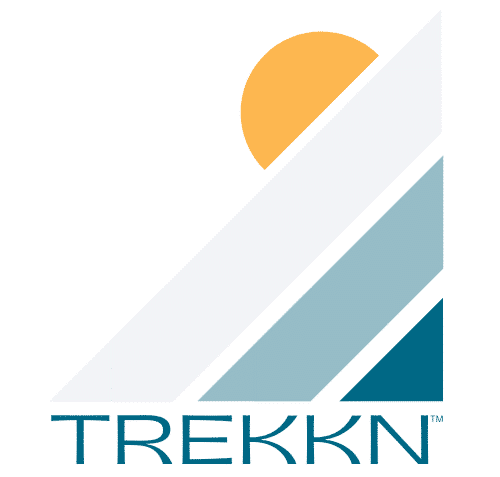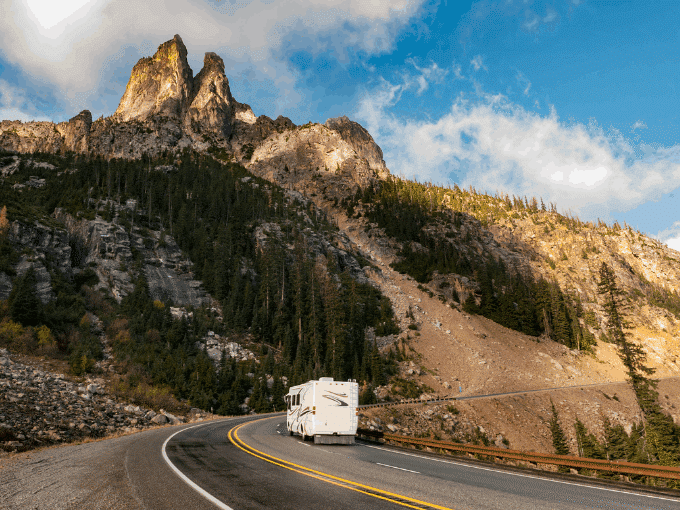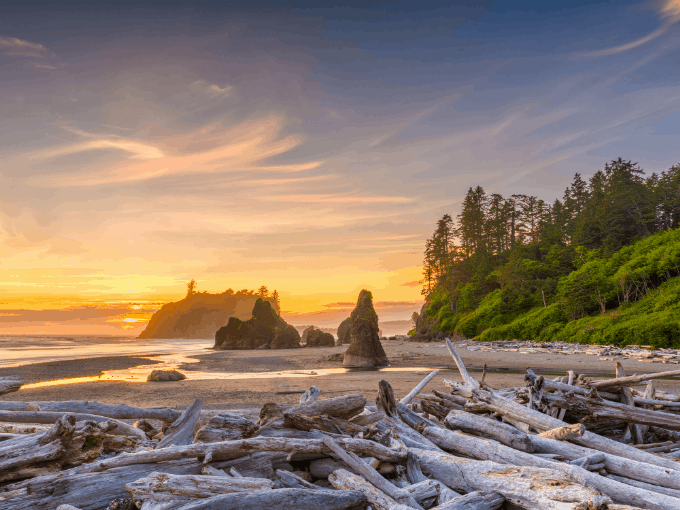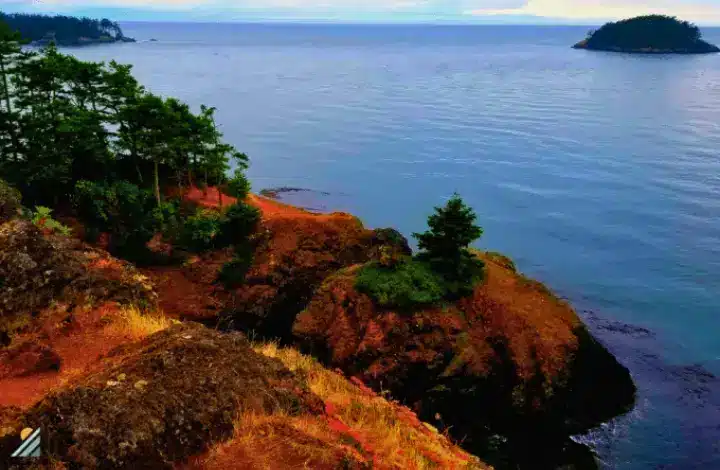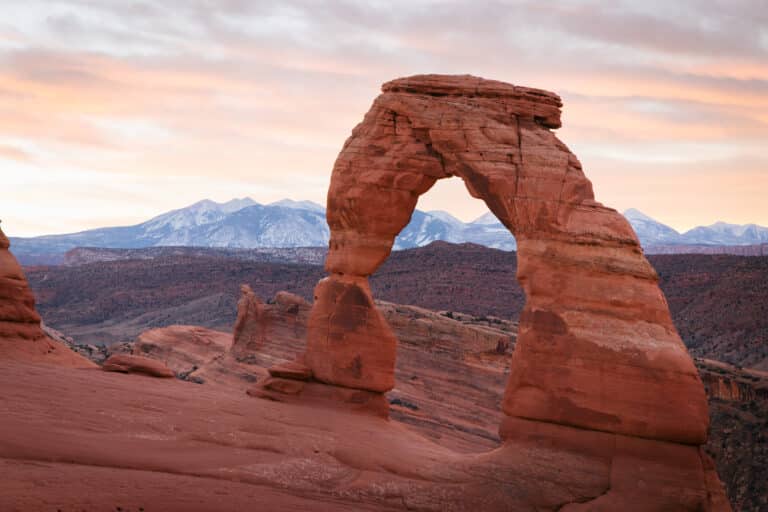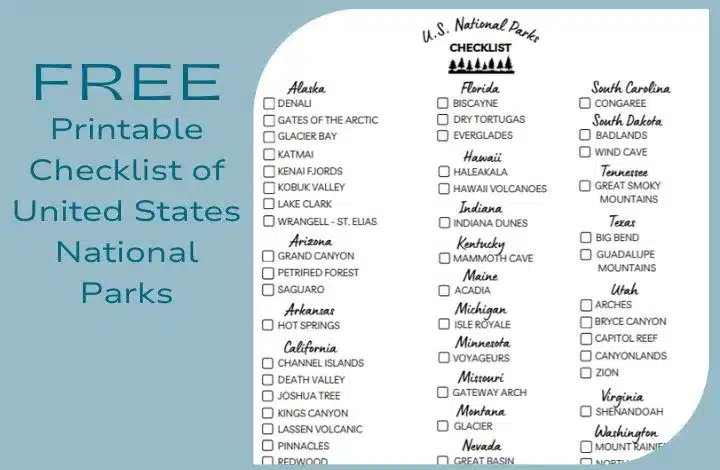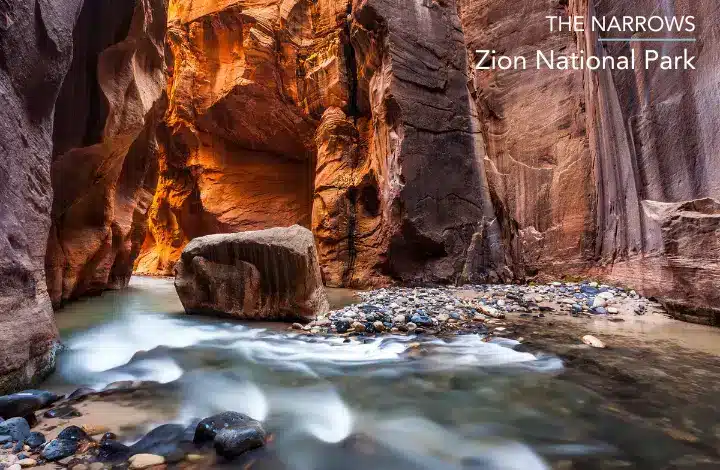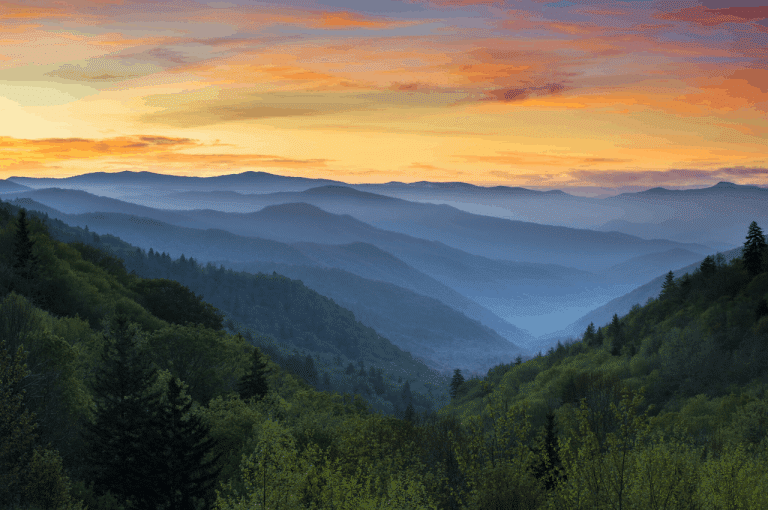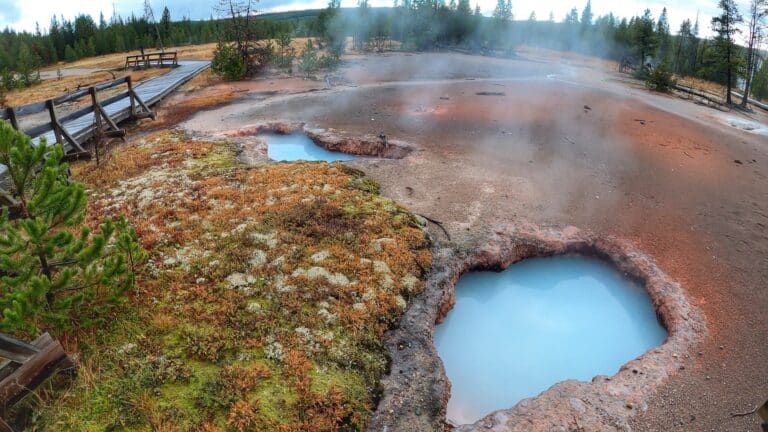National Parks Near Seattle: A Traveler’s Guide
I am a Washington boy. Born and raised to the ripe old age of 18. I am proud of my old stomping grounds, not least of all because of the three national parks near Seattle that you can explore and enjoy any time you darn well please.
You can bet that, even though I have only spent about 8 months in Washington since graduating from high school in 1993, it still holds a very special place in my heart.
As a child, I had the chance to visit two out of these three national parks in Washington State. But like you, I want so much more.
Nevertheless, let’s take a closer look at all there is for you to take in with a visit to one (or all) of these amazing national parks near Seattle.
Childhood memories are tricky things. It seems we never quite remember all of the details just as they were. Maybe it’s our small size that skews the memories a bit, sometimes morphing the most mundane experiences into “larger than life” moments for our child-selves to reminisce about for years to come.
But I can tell you that at 10 years old, when I got the chance to spend a week hiking and camping around the base of Mount Rainier, it created some amazing memories that will absolutely last a lifetime. I still relive those incredible memories with my dad and brother almost 35 years later.
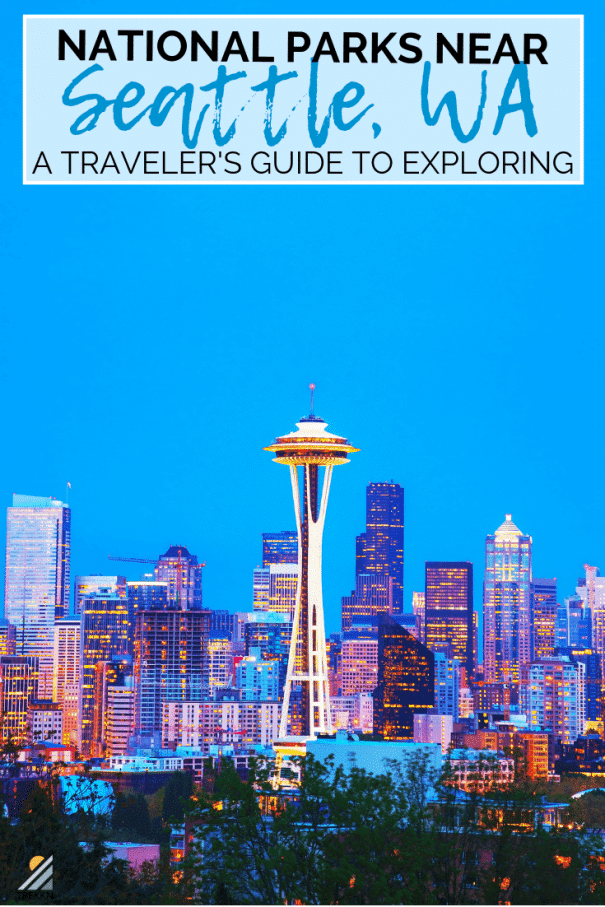
Mount Rainier National Park
At over 14,000 in elevation, Mount Rainier is a fitting centerpiece for this breathtaking national park located about 65 miles Southeast of the emerald city of Seattle. This park offers the highest elevation of any of the national parks in Washington State.
Depending on the time of day you travel, and the related traffic that comes with it, a drive from the heart of Seattle to Mount Rainier National Park should take you about 1.5 to 2.5 hours. And yes, it’s worth every minute and every white knuckle, just in case you were wondering.
If you are pressed for time on your visit to Seattle, this national park is likely your best bet. Of course, you could spend weeks in the park and not even scratch the surface of what it has to offer. But a day trip will still give you more beauty and wonder than you bargained for. I can pretty much guarantee that.
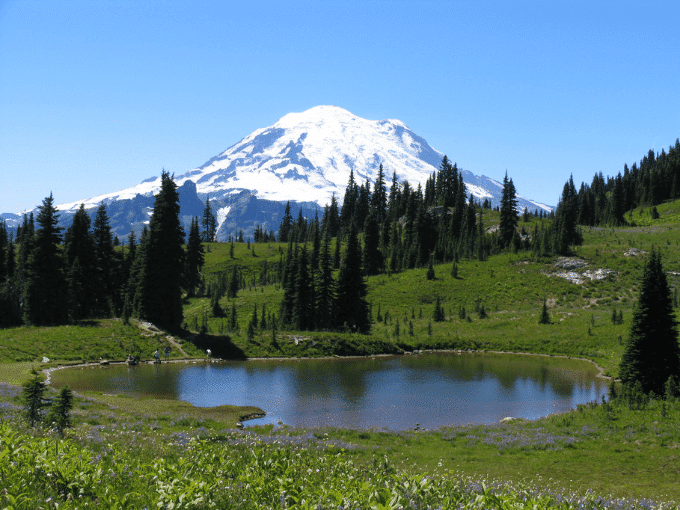
Interesting Park Facts
Consider these interesting facts about this national treasure:
- Mount Rainier is an active volcano (Last Eruption: 1894-95)
- It is the most glaciated peak in the contiguous 48 states; those glaciers feed five rivers that enrich the surrounding landscape
- Your visit can include exploring subalpine meadows of wildflowers, so abundant and mesmerizing it will make your head spin
- There is a good chance you could encounter a black bear or a mountain lion during your visit, since both are abundant within the park
- With over 260 miles of maintained trails within the park, you can sneak in a short hike on your day trip also
Weather Patterns
Regardless of the time of year you plan to visit, you will want to take an extra few minutes to check on the weather forecast for the park prior to your visit. As they discuss in detail on the official Mount Rainier National Park site, rapid weather changes are the norm.
They point out that “wet, cold weather can occur anytime of the year” so pack accordingly and bring that extra layer and a waterproof option along to make your trip as enjoyable as possible.
Obviously, if you are visiting at any time other than the glorious Washington summer, you will want to keep a close eye on how weather is road conditions. Those rapid weather changes can absolutely affect your planned travel routes if snow is in the mix in early spring, fall or winter.
Lodging
Let’s say you’ve got a bit more time to explore everything that this region has to offer, and you need lodging for a few nights in the park. There are a couple of fantastic (and historic) options within Mount Rainier National Park that will keep you as close to the action as possible:
National Park Inn
National Park Inn – With only 25 rooms available in this quaint inn, you will want to book early to enjoy a stay at 2,700 ft elevation.
Paradise Inn
What’s in a name? This historic inn will usher you right into paradise as you sleep in one of 121 guest rooms located at 5,420 ft elevation.
RV Camping
If you are fortunate enough to be RVing into the area (my personal pick) and are looking for a place to call home for a few nights or a few weeks while you fully explore the area, there are some excellent Mt. Rainier RV Camping options nearby.
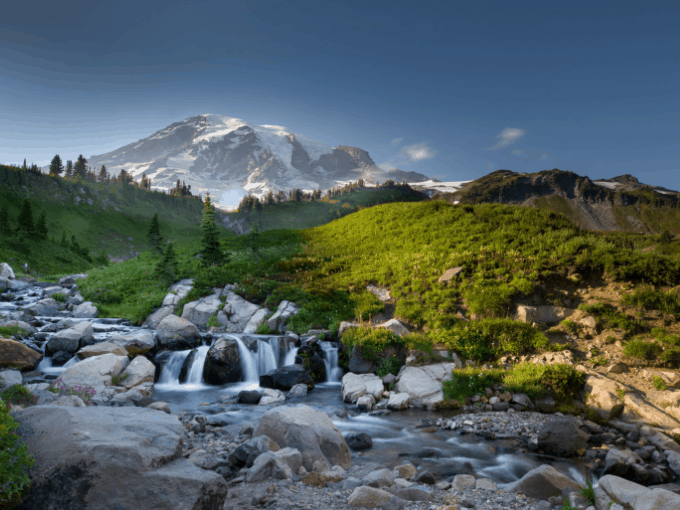
Depending on the size of your RV you can dry camp (no electrical, water or sewer hookups) for a reasonable nightly rate within the park.
Cougar Rock Campground
- Located in the southwest section of park
- Max RV length: 35 ft | Max travel trailer length: 27 ft
- Elevation: 3,180 ft
- Flush toilets on site
- Potable water on site
- Dump station on site
- Campsite reservations are available
Ohanapecosh Campground
- Ohanapecosh is located in the southeast section of park
- Max RV length: 32 ft | Max travel trailer length: 27 ft
- Elevation: 1,914 ft
- Flush toilets on site
- Potable water on site
- No dump station on site. The nearest dump station is located at Maple Grove Resort
- No reservations available. Campsites are available on a first-come, first served basis
White River Campground
- Located in the northeast section of park
- Max RV length: 27 ft | Max travel trailer length: 18 ft
- Elevation: 4,400 ft
- Flush toilets on site
- Potable water on site
- No dump station on site
- White River campsites are available only on a first-come, first-served basis.
North Cascades National Park
Tucked up against Washington’s norther border with Canada, North Cascades National Park is home to more than 300 glaciers and a wide range of climates and landscapes. (Which makes me even more sad that this is the only one of the national parks in Washington State that I did not visit!)
Because the park is divided by the Cascade Mountain Range, giving it its name, the differences in precipitation between the east and west portions of the park are extreme.
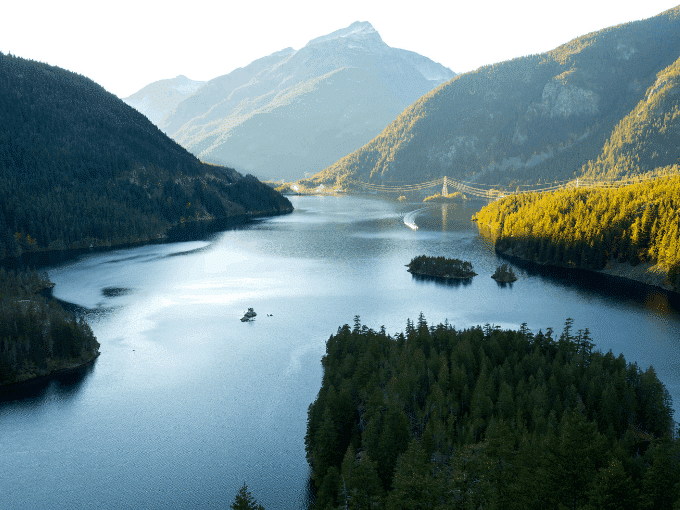
In the west, you can find lush, green vegetation beyond imagination and the species that have adapted to these wet conditions. And in the east, you will find a history of recurring wildfires due to the lack of precipitation received on average. Much like the state of Washington itself, North Cascades National Park is a living tale of two diverse climates.
Located approximately 120 miles from Seattle, which is less than a three hour drive, North Cascades National Park will give you an unparalleled opportunity to explore much of what makes Washington state so unique.
Interesting Park Facts
Here are a few facts about this national park you may not be aware of:
Weather Shifts
The best time to visit North Cascades National Park, if you want to avoid the messiest weather, is from mid-June to late-September. While not quite as busy, the spring and fall seasons are becoming more popular for visits as well with improved roadway conditions leading to the park.
Although the elevations throughout this park are generally lower than what you will find in Mount Rainier National Park, rapid changes in weather are still common.
When venturing up to elevations above 5,000 ft, and especially when hiking, be aware of the weather conditions and plan your travels accordingly.
North Cascades National Park Lodging
Ideally, you will have the chance to spend more than just one day exploring all that the North Cascades have to offer. If you have the chance for an overnight stay (or three), here are the two most convenient lodging options available to you near the national park:
Ross Lake Resort
If you’re looking for a unique wilderness experience put Ross Lake Resort at the top of your list of options. It’s located near the eastern border of the park. And if a remote, serene experience is on your bucket list, this spot is perfect.
It’s not accessible by road. That’s right, a water taxi will be your only option for getting to this pristine and peaceful location!
Wait lists are common for this small resort that consists of only 12 individual cabins and three bunkhouses. So plan ahead and book early. Reservations can be made up to one year in advance. Ross Lake is a seasonal resort open from mid-June through October.
North Cascades Lodge at Stehekin
Don’t worry if Ross Lake is fully booked, you have another great option. Try North Cascades Lodge at Stehekin, which is located near the southern tip of the park on the shores of Lake Chelan.
This accommodation is also not accessible by road. The most common form of transportation is to take a passenger boat that departs from the town of Chelan. Depending on which boat you select, the trip can take between two to four hours.
The Lodge has 27 rooms available and they fill up fast. I recommend you make reservations as far in advance as possible.
House Rentals
Other accommodations will be available in surrounding communities for you to explore as well. Be sure to check out options on the Airbnb or VRBO marketplaces.
We have been very pleased with our lodging experiences through Airbnb over the years.
North Cascades RV Camping
Of course, we can’t wrap this section up without pointing out a few options for RV camping in the area. Without a doubt, we still believe this is the best way to experience just about any location across the planet.
All of these campgrounds are located within proximity to the Ross Lake National Recreation Area, which separates the north unit of the North Cascades National Park from the south unit.
Alpine RV Campground
- Located in Marblemount, Washington
- Offers pull-through sites that can accommodate larger RVs
- Full Hook-Ups available (water, sewer, 30-amp electric)
- $40 per night (very reasonable in our opinion)
- Several recreational amenities
- Online reservations available
Newhalem Creek Campground
- Located in Newhalem, Washington
- Elevation: 500 ft
- Dry camping for RVs or tent camping. No RV hookups or showers are available.
- Potable water on site
- Dump station on site
- Flush toilets available
- Limited sites can accommodate up to 45 ft RVs
- Online reservations available
Goodell Creek Campground
- Managed by the National Park Service
- Located near Newhalem, Washington
- Elevation: 500 ft
- Maximum RV length of 20 feet
- Dry camping with no RV hookups or showers available
- Potable water available at main campground
- Open year round. Sites are available on a first-come, first-served basis. Online reservations are available for summer months and can be made up to six months in advance of your stay.
Plan Your Visit
With so much to explore, you could happily spend weeks taking in the sights, sounds and adventures waiting for you in North Cascades National Park. Be sure to visit the official national park website for updated information and details before your visit. And above all, enjoy your adventure!
Olympic National Park
And now for something completely different, and honestly, almost other-worldly. I can tell you this: After spending 17 months traveling all across our great nation by RV, I still have never experienced anything quite like Olympic National Park.
While I didn’t get to visit here on our most recent RV adventure (as I said, I didn’t get to visit any of the national parks in Washington State), I spent a lot of time exploring this area as a teenager and was simply blown away.
This incredible park, located in the northwest corner of the state and occupying much of the Olympic peninsula, encompasses both glacier-capped peaks as well as old-growth rain forests. It covers nearly one million acres and includes approximately 70 miles of the most rugged and unique coastline you will ever come across.
Now, getting to this national park from Seattle can be half the fun! The simplest route, but longest in distance, is to head south out of Seattle on I-5 and wrap around the southern tip of Puget Sound before heading back north on Highway 101 toward the park and the Staircase Entrance Station on the southern edge. You should expect 2.5 to 3 hours to reach the edge of the park taking this route.
If You Seek Adventure
But the most adventurous (and certainly more expensive) route is to simply head west from Seattle and make use of the extensive ferry system to make your way across Puget Sound to Bainbridge Island.
From there, you can choose another ferry to take you further directly west, or you can then make a bit of a drive and hit Highway 101 to carry you toward the park. Again, the most convenient entrance station for you will likely be the Staircase Entrance Station in the south.
With the ferry option, I can’t really give you a time estimate. But definitely expect it to take you at least as long, and possibly longer, than the longer drive to the south.
A Bit About the Park
And what sort of interesting facts will you discover when you arrive in the park?
Plan for Weather Changes
This should go without saying, but do not make your way into the Olympic Peninsula of Washington State without adequate rain gear to keep yourself dry and comfortable. Average rainfall on the peninsula can reach up to 170 inches!
Of course, layering is also a great idea. You may encounter varying temperatures as you make your way from the elevated mountainous region around Mount Olympus to the Pacific coastline at sea level.
Elevation and windy conditions can deliver an unwelcome surprise if you don’t come prepared in both both body and mind.
Olympic National Park Lodging
Surprisingly, there are actually four different locations for you to choose from if you choose to stay within the national park:
- Kalaloch Lodge – Located near the southern tip of the coastal region of the park, this historic lodge (nearly a century old) can provide you with a room in the lodge or a cabin or campsite nearby. Book early and bring your booties, because it can get chilly on that coast at night.
- Lake Crescent Lodge – If you find your way to the northern portion of the park, this picturesque lodge located along the shores of Lake Crescent (and close to the Strait of Juan de Fuca to the north) offers some fantastic lodging options. With several different types of rooms, you will find what you are looking for. Just be aware that the Historic Lake Crescent Lodge rooms do not allow children and only have a shared central bathroom for guests.
- Log Cabin Resort – Not sure about you, but they had me at “log cabin” with this one. If more rustic accommodations fit you best, this is likely the option you will want to explore. This resort is located close to Kalaloch Lodge in the north and offers several room types, including a new log cabin with kitchenette included.
- Sol Duc Hot Springs Resort – Need to battle the chill of the Olympic Peninsula? The Sol Duc Hot Springs are just what you need! From small cabins to a more spacious Riverside Suite, you will find top notch accommodations that will have you talking for years to come.
Be sure to visit the official National Park Lodging page to fully explore your lodging options in and around the park.
Olympic National Park RV Camping
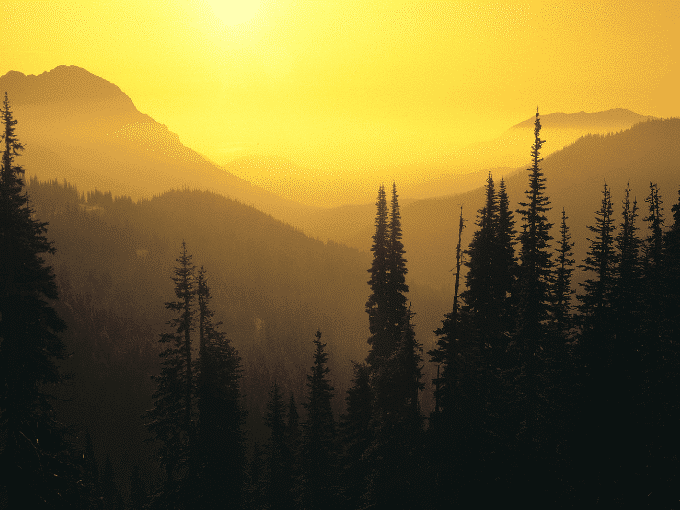
Of course, we can’t wrap this up without also giving you RVers out there some great options for parking your adventure capsules and soaking in all that this lush and diverse national park has to offer:
- Sol Duc Hot Springs RV & Campground (north central region of park)
- Only 17 sites available
- 26 ft to 36 ft RVs allowed, depending on site
- Described as “a gravel parking lot”, so nothing luxurious here
- Water/Electric Hookups, NO sewer
- Bathrooms available at campground, about 1/4 mile away
- Dump Station on site ($10 fee)
- Log Cabin RV & Campground (north central region of park)
- 32 RV sites available
- At least some sites have Full Hookups (call for details)
- Individual fire rings and picnic tables for each site
- Toilets and showers on site
- Coin-operated laundry on site
- Elwha Dam RV Park (near Port Angeles on northern edge of park)
- 51 sites available, “extra-long pull-thrus”
- All sites have Full Hookups (30 amp & 50 amp)
- Community Center and laundry facilities provided
- Modern restrooms and showers on site
- Small playground and 24-hour security
- Glen Ayr RV Park (near southeastern edge of park, near Hoodsport on Hood Canal)
- Waterfront resort (Puget Sound)
- Approx. 35 RV sites total
- Deluxe and Pull-Thru sites with water views
- Full Hookups at all sites (50 amp available)
- Gravel and concrete throughout park
- Guest laundry and showers nearby
- Riverview RV Park (in famous Forks, WA…for you vampire fans out there)
- More Pacific coast location, if that is what you are looking for
- Full Hookups with 30 amp or 50 amp available
- Fire ring and picnic table at each site
- Pull-thru sites accommodate up to 45 ft RVs
- Restrooms and coin-operated laundry on site
- Propane and firewood sold on site
Plan Your Visit to Olympic National Park
Look, by this point if you are not dying to visit Olympic National Park and experience all that it has to offer, I’m not sure how to help you. With so much diversity to offer, it deserves your full attention as you consider national parks near Seattle to visit.
Check current conditions, alerts, and other park regulations to be fully informed when planning your trip to this incredible location.
Which Washington State National Park Will You Visit First?
I know, I know…it feels impossible to pick between such pristine and breathtaking locations. Seattle really has a lot going for itself with such treasures located just a short drive away. But I hope this information I’ve provided will help you plan your next visit to a national park.
We believe in the extreme value of all national parks to open our eyes to the importance of our natural areas and public lands, and these three choices are no exception to that.
You will absolutely find far more than you bargained for when you visit one of these national parks near Seattle!
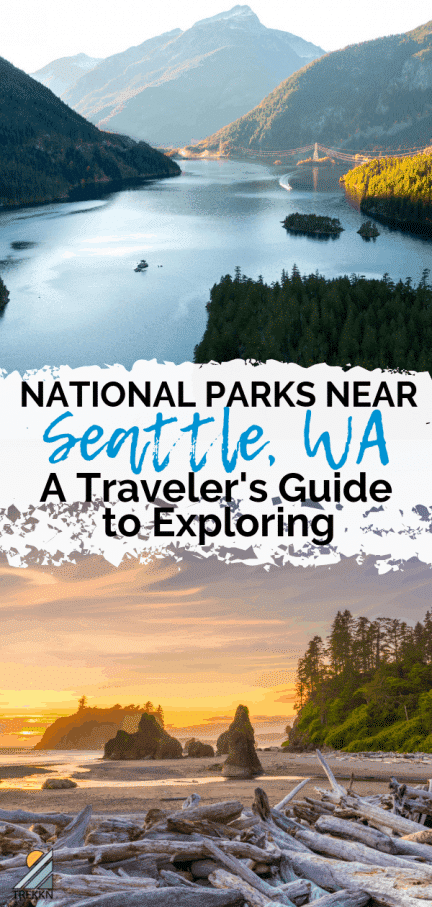

Todd loves a competitive game of table tennis, a breathtaking hike, and exploring new places. He lived and traveled in an RV with his family as they traveled throughout much of the US and parts of Canada. Todd has extensive knowledge about RV travel, safety, and accessories and has shared many of his stories here on TREKKN. When he’s not busy launching and building small businesses, you may find him staring at pictures of Glacier National Park (probably his favorite spot on earth).
